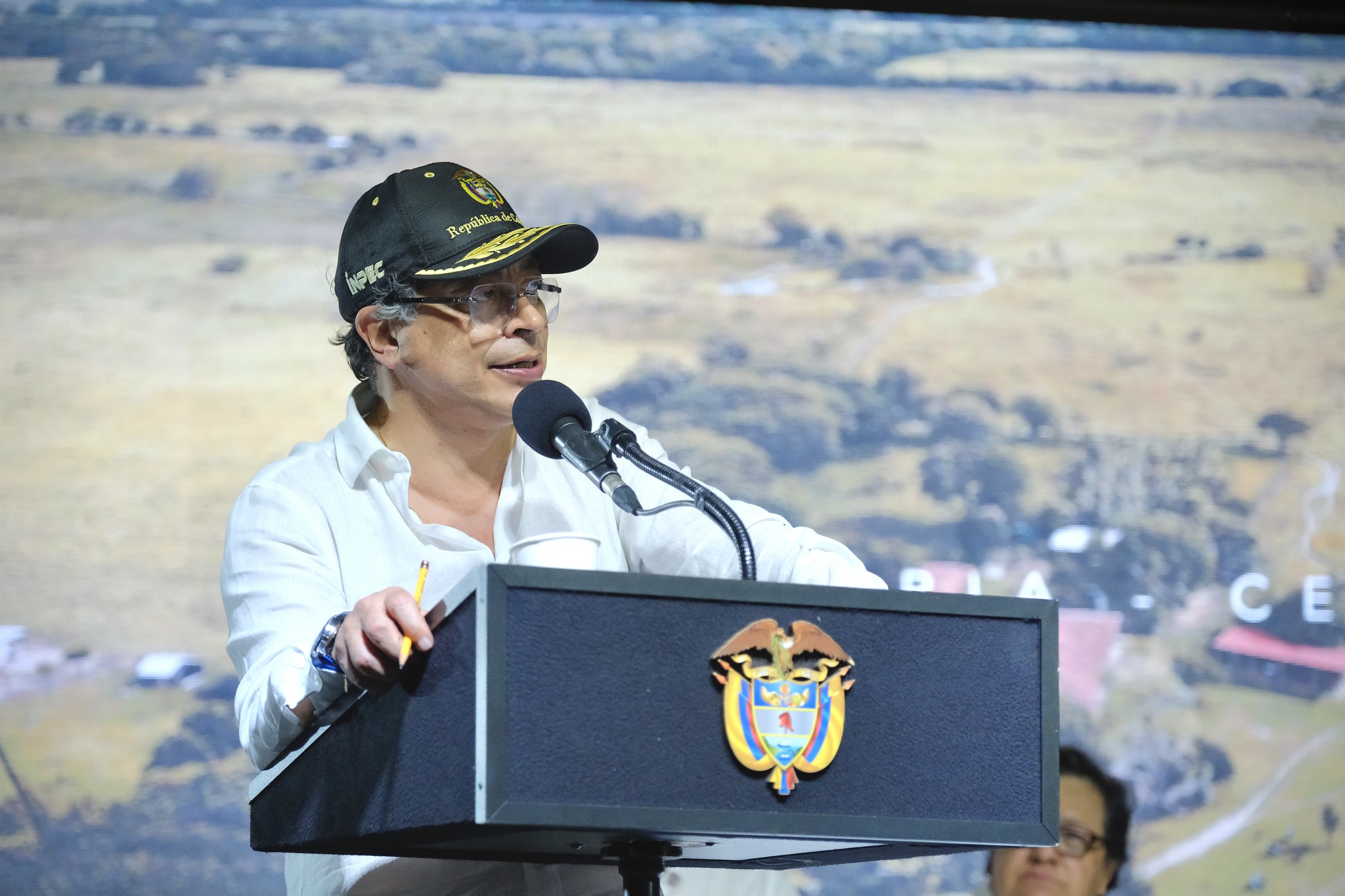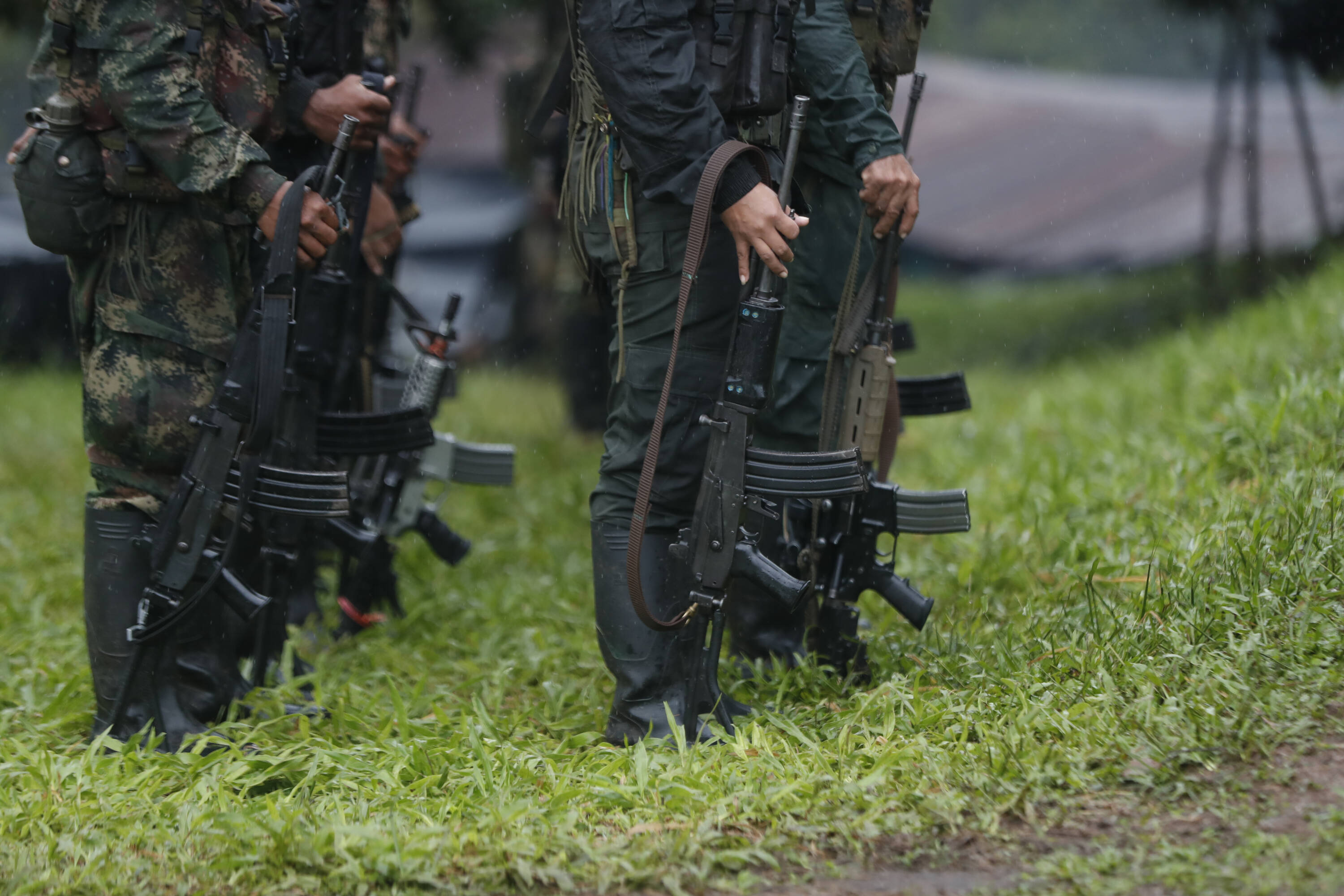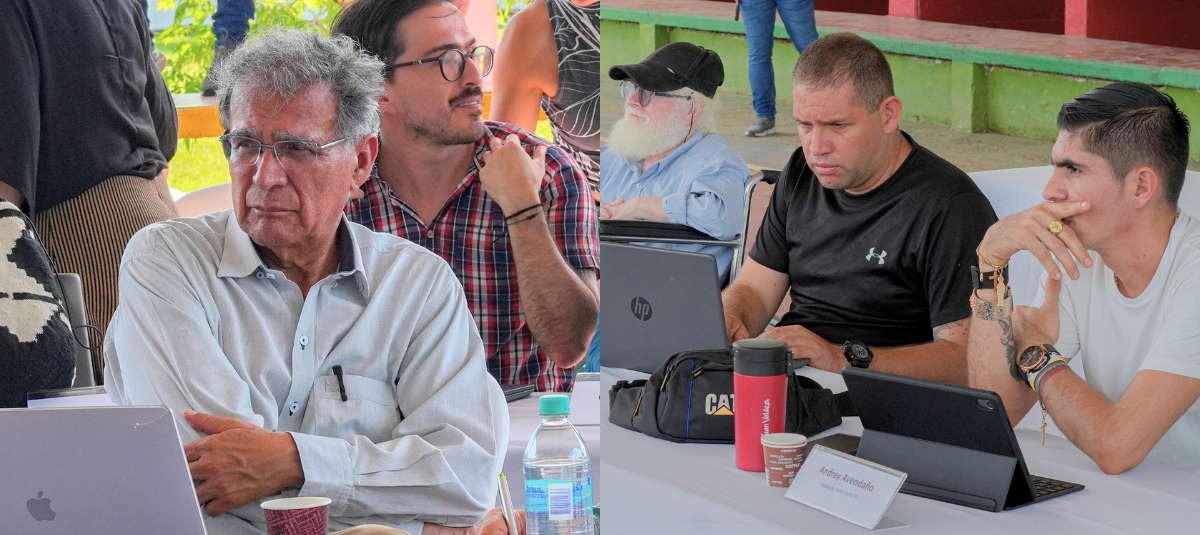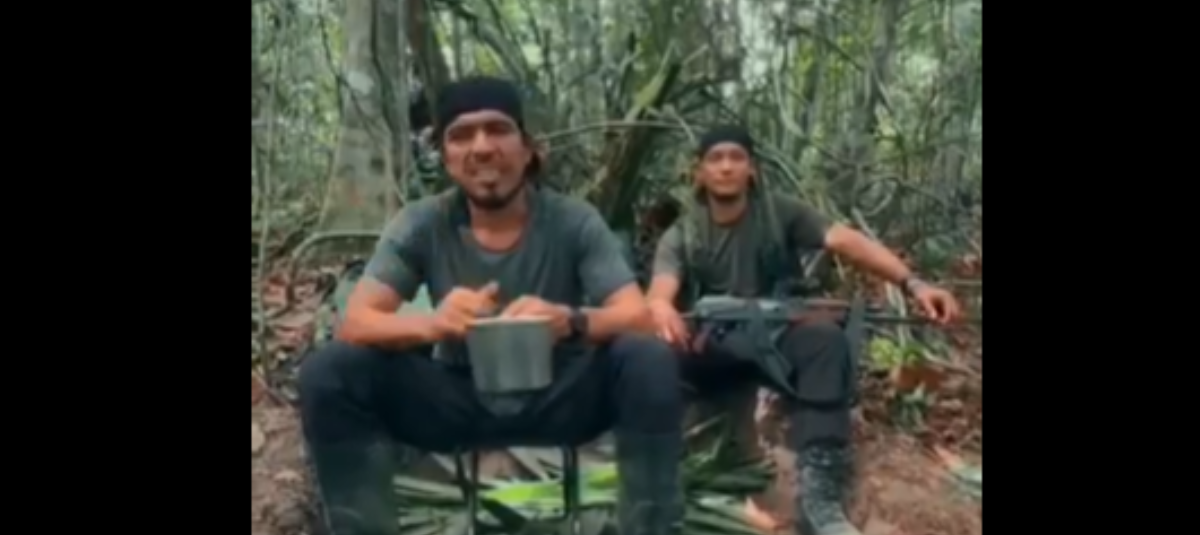The government and the 33rd Front agree on a location zone in Catatumbo to advance the concentration of dissidents.

President Gustavo Petro confirmed this Saturday that the government's peace delegation and members of the dissidents of the 33rd Front—one of the groups that make up the Magdalena Medio Gentil Duarte bloc—agreed to establish a temporary relocation zone in preparation for the "cessation of violence."
The document, signed this Saturday after a meeting in the city of Cúcuta, establishes the establishment of a temporary settlement zone in the rural area of the municipality of Tibú, under the parameters established in Law 2272 ('total peace').
"A peace zone for the cessation of violence has been agreed upon with the 33rd Front of the General Staff and the national government. The combatants and weapons of the 33rd Front will gather there. Peace in Catatumbo begins," President Petro wrote on his X account.
This front, led by alias Jhon Mechas and alias Richard, is part of the dissidents of the Magdalena Medio Gentil Duarte Bloc, which in turn is part of the General Staff of the Blocs and Fronts-EMBF (known as the 'Calarcá' dissidents).

President Gustavo Petro in La Gloria, Cesar. Photo: Presidency
The agreement also indicates that proposals submitted by the parties were analyzed and evaluated to define the temporary location zone.
"(...) Its location was finally agreed upon, taking into account the security, logistical, geographic, and administrative conditions required, to meet the basic needs of temporary stay for the members of the 33rd Front of the EMBF FARC-EP who will participate in peace with social and environmental justice," the document states.
The Government Delegation confirmed that in the coming days, the delegations will draft the agreements and protocols necessary for the establishment of the zones, their operation, and their duration in each phase.
It's worth mentioning that the decree suspending offensive operations against this armed group, signed by President Petro and valid until May 18, was contingent on their location in these concentration zones, the purpose of which is to facilitate their transition to civilian life.

This front is part of the Magdalena Medio Gentil Duarte Bloc's dissidents. Photo: Ernesto Guzmán. EFE
This agreement comes amid the bloody war between the 33rd Front of the FARC dissidents and the ELN in Catatumbo. According to the most recent report by the PMU (Ministry of Human Rights) in that region, 65,079 people have been displaced, 12,740 have been confined, and at least 120 have been murdered. It is precisely these figures that raise doubts about the Executive's proposal.
The document is also published just days after the attack perpetrated by the Jorge Suárez Briceño Bloc—the other structure that makes up the EMBF—against a group of soldiers guarding a Territorial Reincorporation Space (ETCR) in the department of Guaviare, an incident in which seven soldiers were killed.
What does the Total Peace Law say about location zones? In paragraph 3 of Article 8, the law establishes that the National Government or its authorized representatives may agree with the spokespersons or representatives of illegal armed organizations, at an advanced stage of the peace process, on their temporary relocation in specific areas.

Leopoldo Durán, Tomás Ojeda, and Andrey Avendaño, spokespersons for the group, were at the table. Photo: Office of the Peace Commissioner.
In these zones, according to the law, the execution of arrest warrants, including those issued for extradition purposes, against members of armed groups involved in the peace process will be suspended. This measure may also be applied during movement to these zones, until the Government determines or declares the completion of the process.
Where can these zones be established? In March, when the plan for the transition to civilian life proposed by the Office of the Peace Commissioner—led by Gloria Quiceno, a member of the government delegation at that table—was announced, Patiño spoke of finding a pre-concentration space with weapons while a safe place was identified to house the members of this illegal armed group.
In this regard, the law establishes that these zones may not be located in urban areas and that the normal and full exercise of the rule of law must be guaranteed within them. "The Government will define how public institutions will operate to guarantee the rights of the population," the document states.

Alias Jhon Mechas is the main leader of this dissident group. Photo: Private archive
Other aspects that the Government will be able to define, based on the agreements signed at the negotiating table, include: the geographical delimitation, the role of national and international bodies in the process of laying down arms and transitioning to legality, the conditions and commitments for the duration and operation of the zones, and the modalities for reintegration into civilian life.
Finally, paragraph 3 establishes that these zones will not be demilitarized zones, that is, they will not be spaces where the Public Force will withdraw and cede military and political control to the armed group.
CAMILO A. CASTILLOPolitical EditorX: (@camiloandres894)
eltiempo





